Sunday 11th September turned out to be quite a remarkable day. A new bird for Derbyshire and an American “Peep” on the Yorkshire Moors. News broke on Friday 9th September 2016, that a juvenile Pallid Harrier had been photographed on Big Moor in North Derbyshire. As seems to often be the case these days, the bird was identified from the photograph, as it had been sent in to the RSPB Hen Harrier Unit by the photographer. The RSPB Unit identified the bird as a possible Pallid Harrier, the photograph being submitted to the RSPB as a female Hen Harrier. Obviously a significant bird for the county and once news was out it was a case of fingers crossed, hoping it would still be around for the weekend. I was unable to go looking for it on Saturday, despite the fact that it had been seen several times on the moors. So, up early Sunday morning, 11th September and by 7:30 Richard and myself were parked in a lay-by over looking the moor full of hope, especially as a pager message indicated that someone had seen it shortly before we arrived and from a different location to where we were.
I was scanning the moor, with my “New Scope”, when suddenly I located the bird hunting across the Big Moor / White Edge ridge. I could clearly see the dark Boa effect and pale contrasting Collar on the neck even at a distance, with orange-brown underparts and a white rump confirmed, I announcing my find with excitement, blurting out directions and very quickly six ecstatic birders were on it. We watched it hunting the moor for at least 15 minutes from 07:45 to 0800 hours, before we lost it to view as it moved over the far distant moorland and out of our sight. My only disappointment was that it was too far for me to get a photograph of it. A new bird for Derbyshire and another county tick. Also on the moor we saw single Red Kite, Common Buzzard, Peregrine and Kestrel. Many Swallow, Meadow Pipit and Skylark were also moving through and a few local Stonechat feeding amongst the Bracken. Plenty of Red Deer also scattered across the moor, getting ready for the “rut” no doubt.
After several hours of fruitless scanning, we eventually decided to call it a day and head off to Hatfield Moors, South Yorkshire, to look for a Baird’s Sandpiper, one of a small group of North American waders called “Peeps” after their Peeping call note. Another bird that showed very well through the telescope but was just a little too far for the camera. Any how a few record shots follow of this distinctive little wader. Also on the moor a juvenile Peregrine was “Buzzing” the flashes, along with a Hobby hunting dragonflies in the hot afternoon sunshine. Numerous Black Darter dragonflies were on the wing with a few Migrant Hawker, Common Darter and a single Brown Hawker. Several Tiger Beetles were scurrying about on the heathland.
The year List has been stagnant for a while but has moved on to 212.
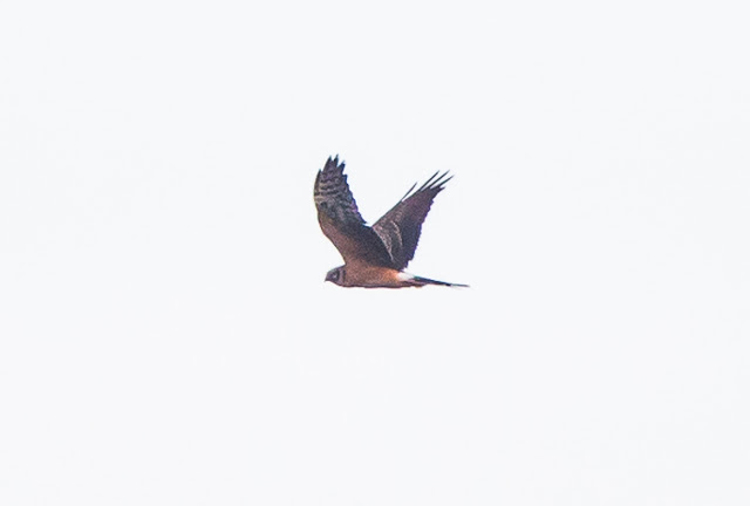
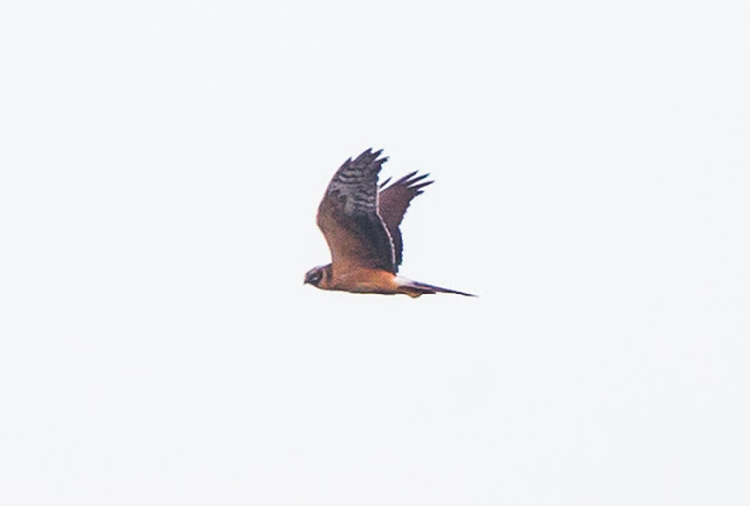
Pallid Harrier – Juvenile – Big Moor Derbyshire 11th September 2016 – I’m very grateful to Pete Garrity for allowing me to use his two images as above as a record of this fantastic bird – Pete Garrity© – check out his website – garrobirds.blogspot.co.uk
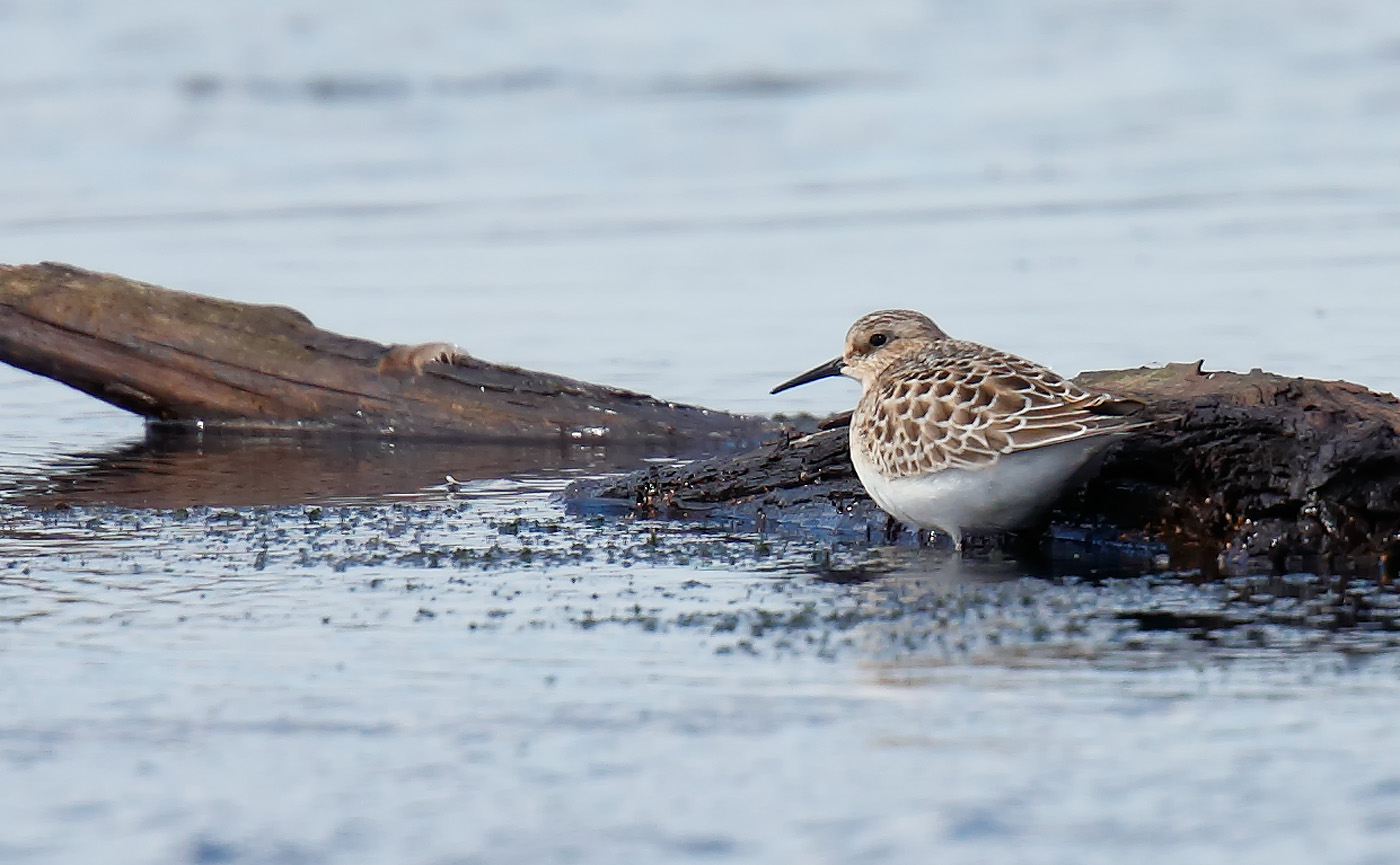
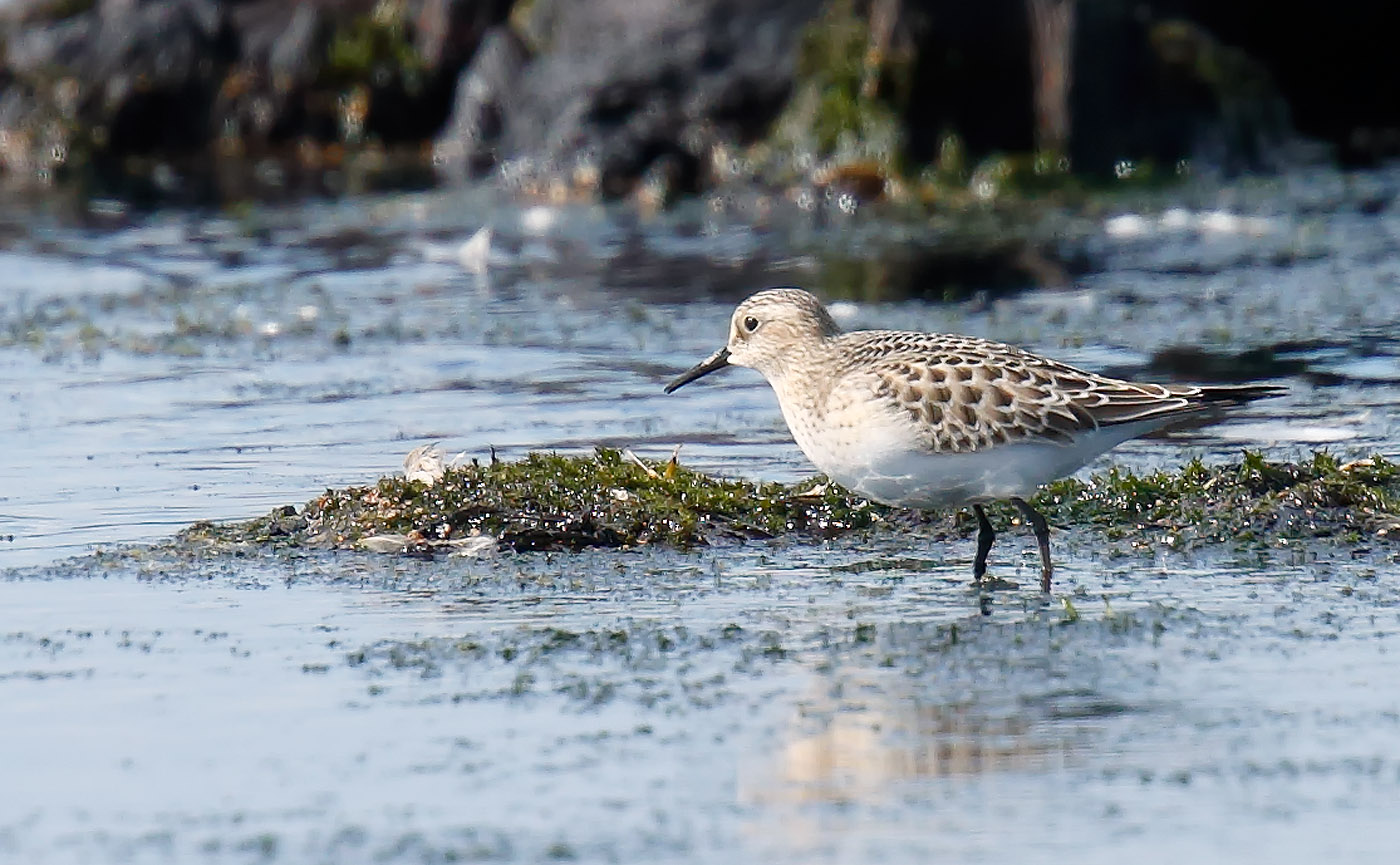
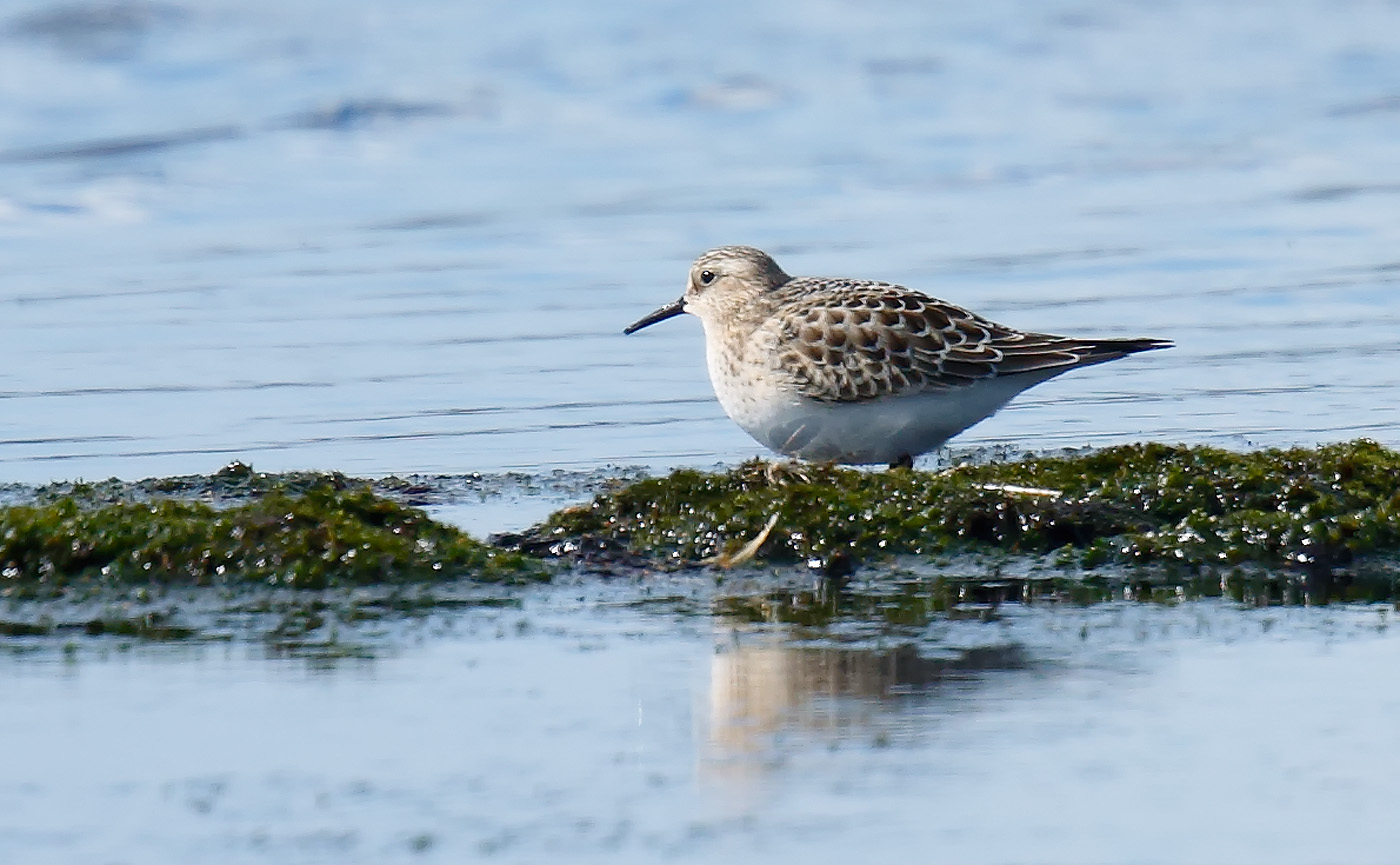
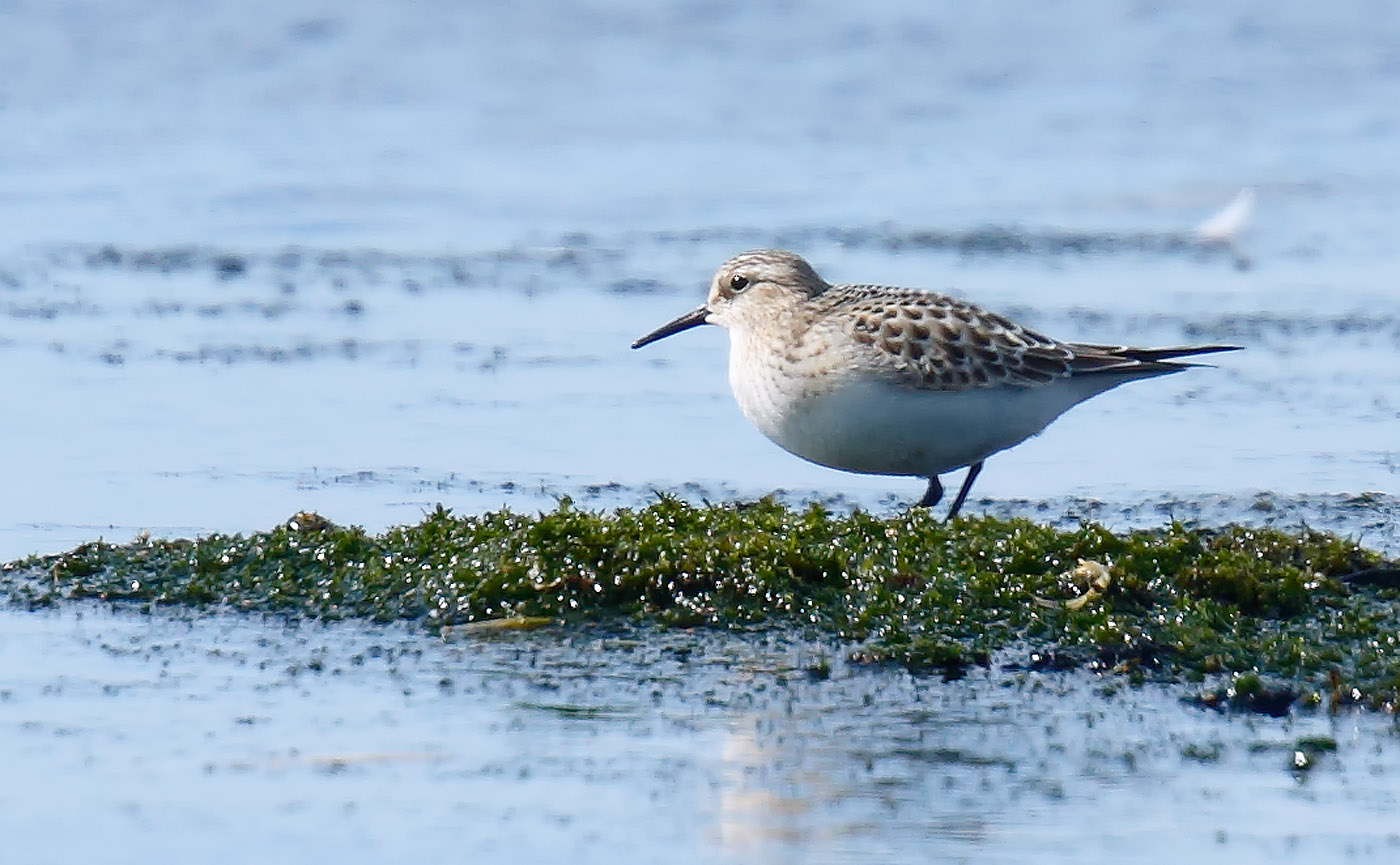
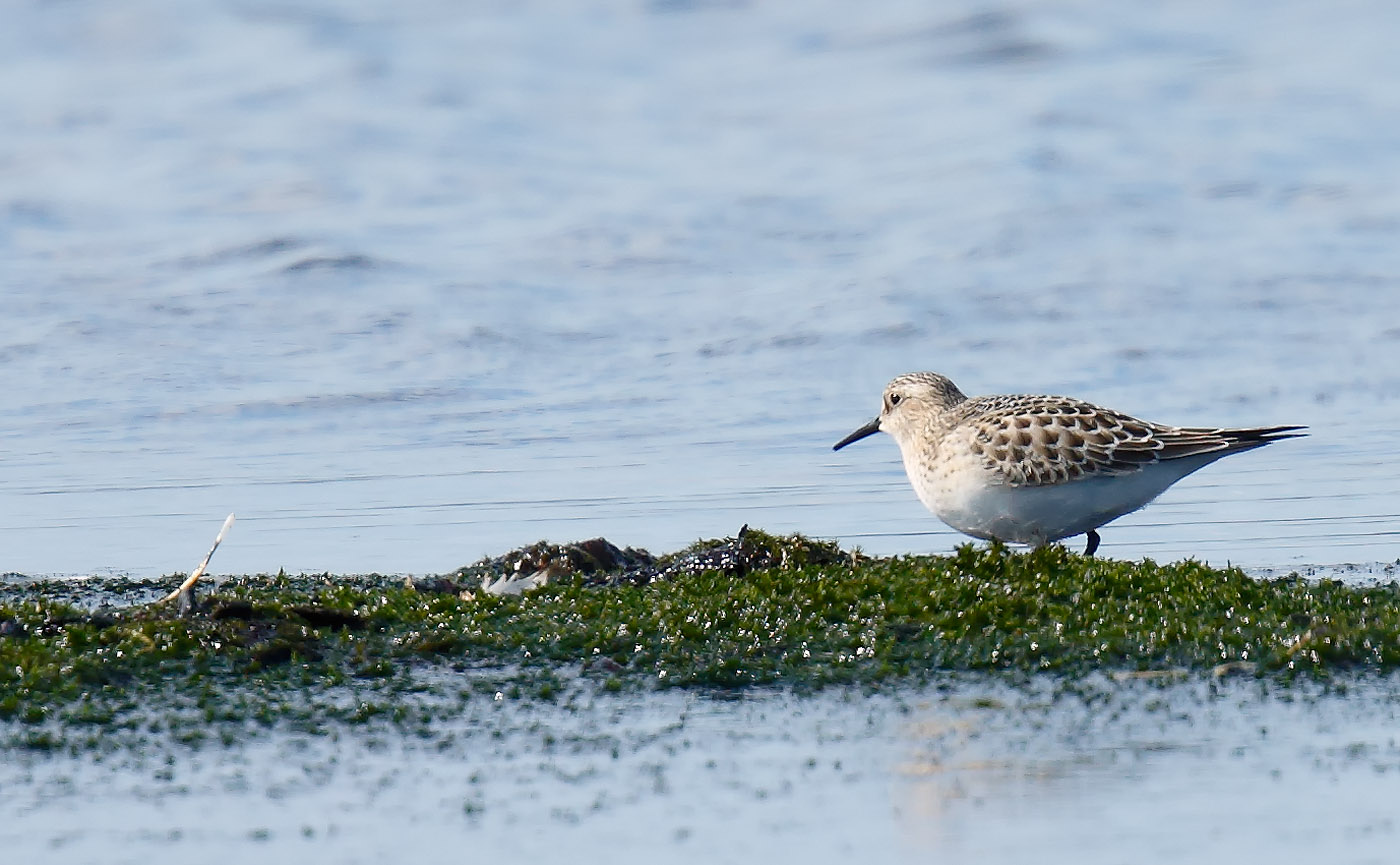
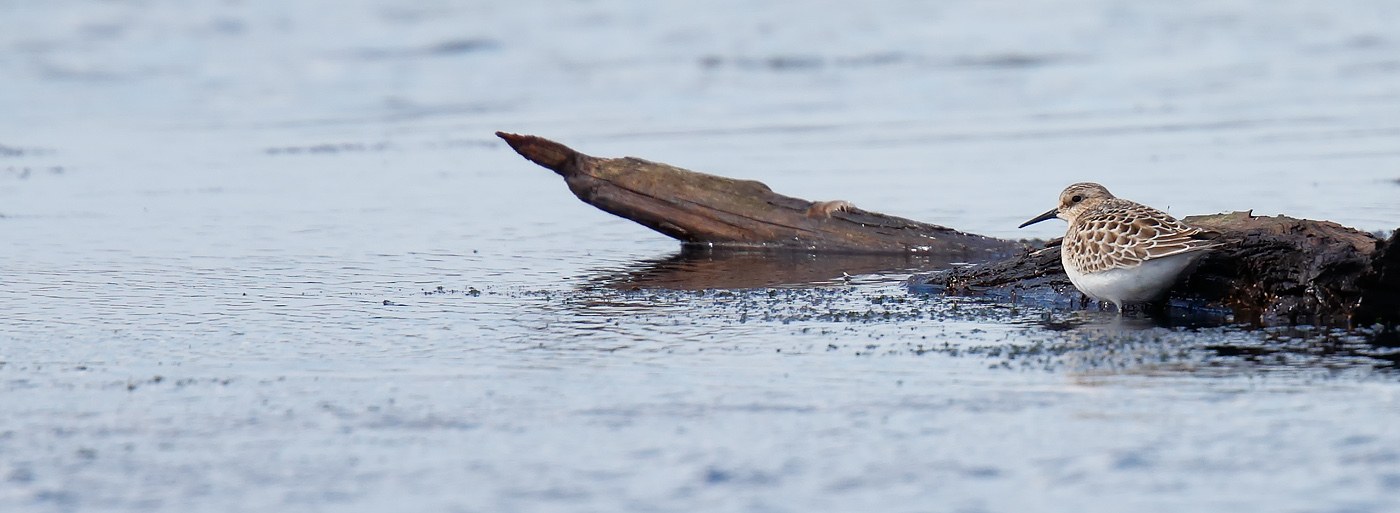
Baird’s Sandpiper – Juvenile – Hatfield Moors, Yorkshire – Above six images – Note the main ID features – Very long primary projection beyond the tail; short legs set back in the body giving it a distinctive low horizontal stance; short, slightly decurved bill at tip; neat uniform dark centred and pale broad fringes to the upper part feathers; a pale spot above the lores – Tony Davison© – When looking at any small wader, the first thing to look at is the primary projection. If it extends beyond the tail, you immediately know you have a good bird to deal with.

Hello Tony, I’ve always had low standards, but yours are too high; I think your record shots are really good. Doug.
Hi Doug – Many thanks. The bird was rather distant so Ive had to crop in a lot and lost a lot of detail, thats why Ive called them Record Shots.